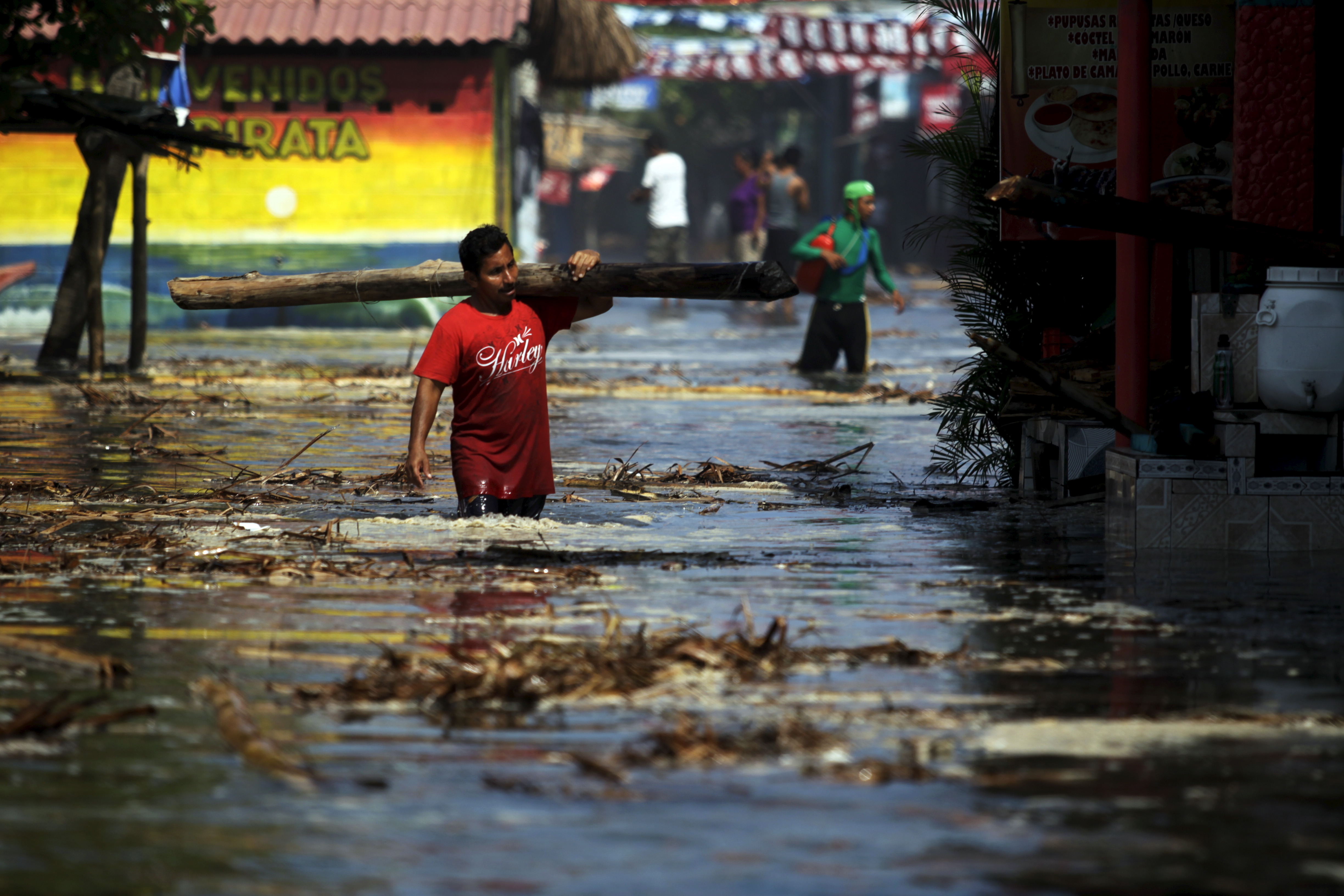U.S. Immigrations and Customs Enforcement has so far taken 121 people into detention during raids in Texas, Georgia, and North Carolina that started this past weekend — and, as of Friday, at least 77 of those have already been deported as a result. The raids have swelled unsubstantiated rumors about more raids at schools and worksites (none appear to have happened) from people fearing they may be next.
The Obama administration announced this new immigration crackdown right before Christmas, against the backdrop of nonstop, harsh anti-immigrant rhetoric from leading Republican presidential candidates, namely Trump and Cruz. Somewhere amid the terror and bewilderment, the fact that the United States is also deporting people to one of the most climate-vulnerable regions in the hemisphere has been lost. It’s time to consider the hidden costs of deporting people to countries that are being ravaged by climate change caused by emissions they didn’t create.
Federal officials have claimed that the raids would only target immigrants who “have exhausted appropriate legal remedies, and have no outstanding appeal or claim for asylum or other humanitarian relief under our laws.” Yet at least 20 people are still using legal means to remain in the country. That’s because, even after a judge’s ruling, there exist other options: People can get their cases reopened because of ineffective counsel. They can apply for special visas, or even for pathways to citizenship that sometimes remain open.
But the vast majority of Central American children who have crossed over to the U.S. and face deportation hearings aren’t represented by attorneys — even though the difference between leaving or staying can sometimes be the difference between life and death.
These immigrants are coming to the U.S. because of the violence that grips Guatemala, Honduras, and El Salvador. El Salvador and Honduras have swapped places when it comes to the highest murder rate in the world — and Guatemala doesn’t trail too far behind. The violence doesn’t spare those who attempted to escape it by coming to the United States but then got forced back: According to one study, as many as 83 people the U.S. has deported back to Central America since 2014, including children, have been murdered.
But while deportees to Central America often face imminent danger from violence, they also encounter the subtler, but no less deadly, threat of climate change once they’re there. The deportees, mostly children in this last series of raids, will be returning to lands that are already being devastated by global warming.
In the nineteenth century, European demand for a series of crops from Guatemala and El Salvador — first dyestuff such as cochineal and indigo, then coffee — led to what sociologist Edelberto Torres Rivas describes (in his book, History and Society in Central America) as “a violent agrarian restructuring.” That restructuring also came at a cost to the land, which was cleared of its trees to make room for monocropping. Honduras, writes Torres Rivas, didn’t base its economy on agrarian exports, “but provided scant opportunity for exploitation of raw materials and minerals” through mining and timber.
All three Central American countries ended up deforested. Their eroded soil makes them especially vulnerable to mudslides following big storms. The region has never been a stranger to precipitation. But storms have already increased beyond the norm, as The Independent explains:
There was only one extreme storm in each of the 1960s and 1970s, and two in the 1980s, according to data released by MARN. But in the 1990s there were four, including Hurricane Mitch in 1998, which killed thousands across Central America. In the last decade, there were eight. So far, in this decade there has already been one, a massive tropical depression in October last year, named 12E by scientists. It lasted 10 days and saw between 762mm and 1513mm of rain, depending on where in the country it was measured. The higher figure was roughly equivalent to the country’s average annual rainfall in the 1970s, 80s and 90s.
“The flood destroyed my whole harvest,” says Herminia Arqueta, who lives in the village of Octavio Ortiz, beside the mouth of the Lempa about a mile from La Tirana. “My house was flooded for three weeks and we had to free all the chickens and ducks, otherwise they would have died.”
The toll of climate change is hardest to miss in tiny El Salvador. Deforested by conquest and plagued by extreme weather, El Salvador is also experiencing sea level rise, resulting in a disappearing shoreline that’s destroying the mangroves on which local economies depend.
But it’s not just El Salvador. As The Guardian reports, Guatemala has been gripped by seasons of prolonged drought and wild storms that, combined, have threatened food security:
In Guatemala, climate change has affected smallholders dramatically in the last two years. The country is particularly vulnerable to climate change and extreme events, thanks to its geographical position in an earthquake and hurricane zone.
The experience of 260 families living on the settlement of Guadalupe in the Suchitepéquez region of the Pacific coast is typical. They lost much of their staple crop last year and the year before. There is more rain in winter now, and the rains that used to come in April now only come towards the end of May. Rains have recently been accompanied by increasingly violent storms, followed by prolonged drought. Deforestation and diversion of rivers by plantation owners producing food or biofuel for export have exacerbated the problems.
Honduras doesn’t fare much better. In fact, it tops all other nations in the world on the 2016 Global Climate Risk Index as the country that’s been most affected by extreme weather events in the 20-year period between 1995 and 2014. You read that right: Honduras is number one on the planet. El Salvador didn’t make the index this year, but Guatemala is at number ten.
So when deportees return to the Central America they’ve fled, they face not only brutal physical violence but an unforgiving climate-change prospect as well. The region has hardly played a part in the historical carbon emissions that have caused the problem, but it is reeling from the effects. Recent data presents the stark difference between carbon emissions in the U.S. and Central America: according to the World Bank, Guatemala has emitted 0.7 metric tons of carbon emissions per capita between 2011 and 2015; Honduras and El Salvador have each emitted 1.1 metric tons per capita in the same time. The United States, meanwhile, has emitted a whopping 17 metric tons of carbon emissions per capita during that time. Further back in time, the discrepancy widens.
The U.S. can build all the borders it wants to keep Central American children out — but borders blocking the carbon emissions that wreck entire impoverished regions don’t exist, and can never be built. The U.S. can also deport all of Central America’s children back to desperation and death from climate change; it’s a shame that Central America can’t deport the carbon emissions that have caused it.




